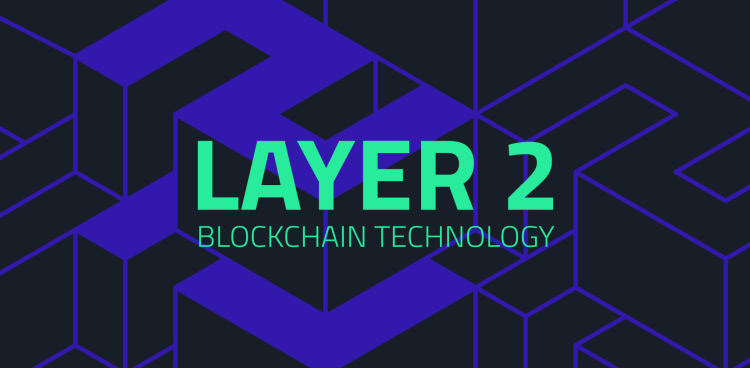Introduction
Blockchain technology has come a long way since the launch of Bitcoin in 2009. While early networks were monolithic—handling all aspects of operation (consensus, execution, data availability) on a single layer—the growing demands for scalability, flexibility, and interoperability have exposed the limitations of this design.
In response, the industry is shifting toward two transformative innovations: modular blockchain architecture and Layer 2 (L2) scaling solutions. These approaches decouple core blockchain functions and move intensive workloads off-chain, enabling a new era of high-performance, customizable, and cost-effective blockchains.
This article explores how these innovations are reshaping the blockchain stack, what benefits they bring, and what their impact means for the future of decentralized systems.
1. The Problem with Monolithic Blockchains
What Is a Monolithic Blockchain?
A monolithic blockchain is a system where all core functions are handled by the same layer:
- Consensus: Ensures all nodes agree on the state of the chain (e.g., proof-of-work or proof-of-stake).
- Execution: Processes smart contracts and transactions.
- Data Availability: Stores all transaction data on-chain, ensuring it is accessible for verification.
Challenges
- Scalability limits: Bottlenecks in throughput and latency
- High fees: Congestion leads to expensive transaction costs
- Poor developer flexibility: Difficult to customize for specialized use cases
- Lack of modular upgrades: Requires full-layer changes to improve performance
2. Enter Modular Blockchain Architecture
What Is a Modular Blockchain?
A modular blockchain separates the responsibilities of consensus, execution, and data availability into distinct, interoperable layers. Each layer can evolve independently and specialize in its role.
Key Layers in Modular Design
- Execution Layer: Handles smart contracts and logic (e.g., Rollups)
- Consensus Layer: Validates state transitions and blocks (e.g., Ethereum, Cosmos Hub)
- Data Availability Layer: Ensures transaction data is published and accessible (e.g., Celestia, Avail)
Benefits
- Scalability: Offloads execution from the base layer, increasing throughput
- Flexibility: Developers can mix and match layers to fit their use cases
- Easier innovation: Each component can upgrade independently
- Resilience: Specialized layers are easier to secure, test, and optimize
Example
- Celestia: A data availability and consensus layer that lets developers deploy their own execution environments (Rollups) without building full L1s.
3. Layer 2 Solutions: Scaling Without Sacrificing Security
What Is Layer 2?
Layer 2 (L2) solutions build on top of existing blockchains, particularly Ethereum, to handle transactions off-chain and then post a summary or proof to the base layer.
Popular L2 Technologies
- Optimistic Rollups (e.g., Optimism, Arbitrum): Assume transactions are valid unless proven otherwise
- ZK-Rollups (e.g., zkSync, Starknet): Use cryptographic proofs to instantly verify correctness
- State Channels and Plasma: Earlier L2 ideas focused on specific transaction types
Benefits
- Massive throughput gains: L2s can process thousands of transactions per second
- Low fees: Off-chain computation reduces gas costs dramatically
- Preserved security: Final settlement still occurs on a secure L1 (e.g., Ethereum)
- Composable ecosystems: Apps on L2 can interact with each other just like on L1
4. The Convergence: Modular Blockchains + Layer 2
How They Work Together
L2 solutions can be seen as execution layers in a modular design. Modular blockchains provide the infrastructure, while Layer 2s bring the scale and specialization.
| Component | Example Technologies |
|---|---|
| Execution Layer | Optimism, zkSync, Starknet |
| Data Availability Layer | Celestia, EigenDA, Avail |
| Consensus Layer | Ethereum, Cosmos Hub, Polygon PoS |
Benefits of Convergence
- Unlimited scalability through parallel execution layers (Rollups)
- Greater decentralization by reducing reliance on monolithic L1s
- Lower barriers to entry for launching new blockchains
- App-chains and Sovereign Rollups: Custom, independent blockchains secured by shared infrastructure
5. Use Cases Enabled by Modular and L2 Architectures
1. App-Specific Blockchains
- Developers can launch chains tailored to DeFi, gaming, or NFTs.
- Execution is optimized for use case performance.
2. Enterprise and Government Adoption
- Modular stacks make it easier to meet regulatory, compliance, and performance requirements.
- Data privacy and customization are more achievable.
3. Cross-Chain Composability
- Standardized layers encourage better communication between chains.
- Shared data availability improves reliability across ecosystems.

6. Key Challenges and Considerations
While promising, this evolution also brings new challenges:
- Cross-layer coordination: Complexity increases when managing separate layers.
- Data availability security: DA layers must be robust and censorship-resistant.
- Developer learning curve: More moving parts mean deeper technical understanding is required.
- User experience: Navigating between L1, L2, and modular components can be confusing without seamless wallets and interfaces.
7. The Future of Blockchain Architecture
Toward a Modular, Scalable, and Interoperable Web3
The convergence of modular design and L2 scaling marks a paradigm shift in how blockchains are built and used. Future blockchains will resemble cloud infrastructure—with composable services layered to deliver flexible and scalable environments.
Long-Term Implications
- No single chain dominates: Interconnected modular components will serve different roles.
- Networks of execution environments: Thousands of Rollups and app-chains coexist under shared security.
- Invisible complexity for users: Wallets and apps abstract the technical details for seamless UX.
Conclusion
Modular blockchains and Layer 2 solutions are not just incremental upgrades—they represent a foundational redesign of blockchain architecture. By separating responsibilities and distributing workloads, they solve long-standing challenges related to scalability, performance, and customization.
As these models mature, we can expect a more flexible, developer-friendly, and scalable blockchain ecosystem, capable of supporting everything from global financial systems to personalized digital applications. This architecture shift is paving the way for blockchain to become the backend of the decentralized internet—efficient, composable, and ready for mass adoption.
















































